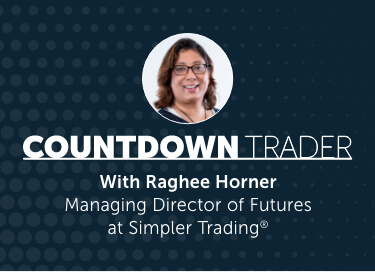Before we jump into the chart let’s talk about where the trade setup in Crude Oil started from. In fact, where this setup started is something that we can do every single week. Where does that start?
Crude oil’s inventory number that’s released at 10:30AM Eastern. This particular time is when we look for the setup and not a moment before.
And there are two ways to look at setups in front of hot zones…
Hot zones are those volatility events that are on the calendar and that the market knows are coming.
So there’s a pre-setup. A lot of folks like to be pre-positioned. They want to make a bet on what that number is going to come out as, and then they’ll be pre-positioned based on their hunch, their bet, their analysis, etc. But the way I prefer to do it is “post”. That means that we let the event happen. We let the market scramble to either congratulate itself or adjust because it miscalculated. So I prefer the post-event, which starts with a hot zone, a scheduled event where we know volatility is going to hit the market.
In this case, it’s Crude Oil — it’s all about the CL contract.
Crude Oil:
That’s where it starts.
The setup isn’t valid until 10:30, so for our purposes here, the only thing I’m interested in before 10:30 are what are the volatility ranges for this market. So from 10AM – 11AM, it’s the 60 min hourly price movement range. I created this calculation based on some data years ago, and this is based on breaking a market down into the 24 hour, 1 hour segments, and then looking at the typical price movement range for each one of those hours of the day. Then based on time and based on volatility, you can project a resistance level and a support level.
So now that I have this data for many different markets, we can use this volatility based support and resistance. I call it the HPMR (hourly price movement range). The idea is basically “first come, first serve.” Whichever way after the event the market reacts (up or down), if it can get up to that resistance or support, we have a play.
How It Played Out:
So what we ended up doing, about 3 minutes after the number came out (the volatility struck), is we got up into this resistance zone. Up in this resistance zone we had a short sell, and that’s “first come, first serve.”
Countdown Trader Fact: Now not always am I looking for the market to go to the other side. I think that’s a common mistake a lot of traders make.
Using volatility, using time, and using the hot zones is where it all begins. This has been a blueprint that I’ve used for many years.



